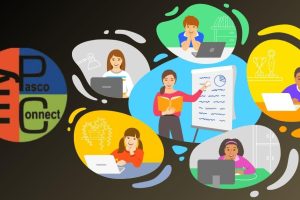Content Attributes
The prospects for the development of robotization and artificial intelligence are very high. The introduction of these technologies into the business helps to reduce costs and increase employee and customer engagement. Business owners can make more informed decisions. But in order to properly implement complex technologies (if you have not worked with them before), you need machine learning consulting. For this purpose, you do not need to hire specialists on the staff of the company. Take advantage of machine learning consulting services.
Areas of application of new technologies
Today ML helps people in almost every area from choosing TV shows on Netflix to taking care of their health. The demand for ML specialists is growing every year. Most of these specialists are required in the field of information technology, software development, financial sector, business environment, marketing and retail. A machine learning specialist is a programmer who trains artificial intelligence using special datasets and algorithms.
Let’s see, for example, how the GPS Navigator app chooses a route to a destination. He has your GPS coordinates and a map, but he also knows about traffic jams, accidents, road repairs. All this thanks to the monitoring of roads via satellite communications and the Internet. The algorithm quickly analyzes possible paths and finds the fastest. And programmers make sure that machine intelligence does not make mistakes.
Real-time adjustments
But the situation on the roads is constantly changing: yesterday there was a turn, and today there is a prohibition sign, and drivers are forced to bypass this place. Adding all changes to the map manually, especially in real time, is too laborious and expensive, and requires a lot of people. But the algorithm does not need to know about the ban; it only needs to see that the cars began to move differently in order to redirect all drivers to other routes.
Teaching a computer to make such decisions is the task of ML specialists. Without this, we would not be able to process the sea of information that people generate every day and make our life more comfortable. If you have an intention to work with large data sets, the specialists of Applandeo Swift development company will advise you on how best to do it.
What does a machine learning specialist do?
The tasks of an ML specialist differ in different companies and projects, but most often he does the following:
1. Collects and prepares data. To pump artificial intelligence requires a lot of data. And not any, but specially marked ones. For example, to teach a car to distinguish cats from dogs, you need to give it a lot of photos and sign which ones depict cats and which dogs. This classification of data is called markup.
2. Collecting data manually is difficult: if it is, for example, images, hundreds of thousands of photos from different angles and different lighting conditions are required. Social media has launched a new feature. The application shows photos of users to their friends and asks: is this such and such a person (name and surname)? It takes less than a second to tag a friend in a photo. This is how users help the neural network learn to recognize faces.
3. Builds machine learning models for data processing. A simple example is the smart Instagram feed. To show only interesting posts, the algorithm tracks your likes, comments, preferences of friends and even people similar to you in terms of interests, and then shows potentially interesting materials. ML specialists create and train such algorithms. The result of their work is a smart model that makes predictions based on data. If tastes have changed, you subscribed to someone or commented on a post, your feed will certainly change.
Algorithms for building a model are programmed for specific tasks. Sometimes they are pretty simple. For example, an algorithm for predicting the preferences of tourists from different cities takes only 20 lines of code.
But there are also very complex algorithms, such as giant neural networks. They copy and mix ready-made pieces of code, creating new programs as output. This technology is called software synthesis. It turns out that the neural network itself, consisting of millions of lines of code, can borrow it from many other programs. The algorithm generates other algorithms. This can be called a new digital life.



